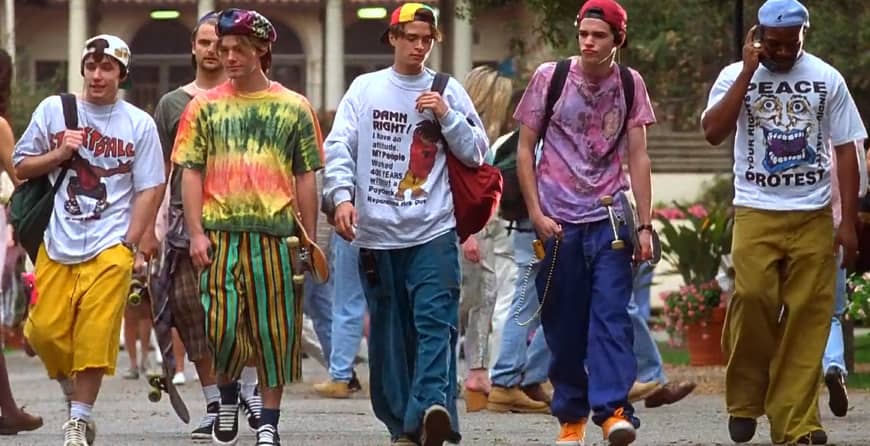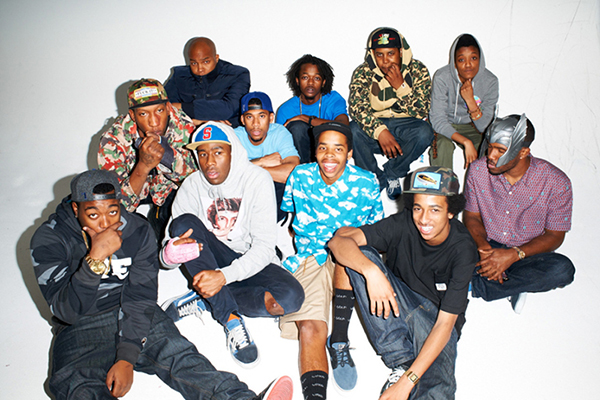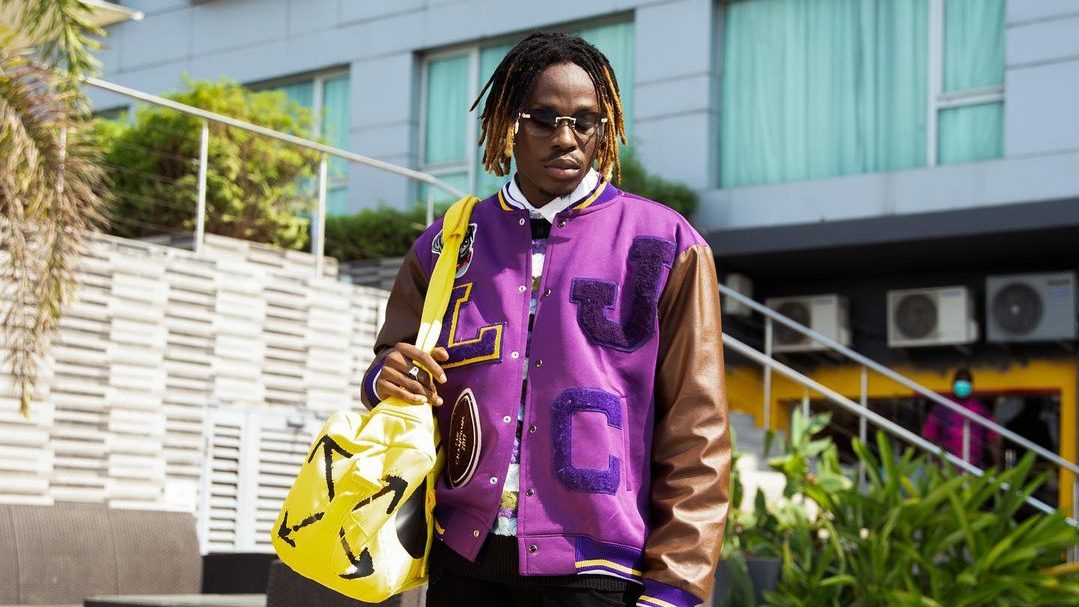Streetwear Fashion Evolution - Exploring Its Journey And Influence
"Streetwear Fashion Evolution" offers a concise exploration of the evolution of streetwear, tracing its roots in urban subcultures to its global prominence today. Delving into key influences, trends, and influential figures, the article provides insight into the enduring impact of streetwear on fashion and culture worldwide.
Author:Elisa MuellerReviewer:James PierceFeb 12, 202410.2K Shares136.3K Views

Streetwear, a clothing style that gained global recognition in the 1990s, originated from a fusion of New York hip-hop fashion, California surf culture, and elements of sportswear, punk, and Japanese street fashion. Eventually, haute couture became an influence on its evolution. This fashion movement typically centres around "casual, comfortable pieces such as jeans, T-shirts, baseball caps, and sneakers," emphasising exclusivity through intentional product scarcity. Enthusiasts avidly follow specific brands and strive to acquire limited edition releases. The Streetwear Fashion Evolutionsaw it incorporating various cultural influences and becoming a symbol of contemporary urban style.
Origin
The roots of streetwear can be traced back to the vibrant subcultures of the 1970s and 1980s, where elements of sportswear, hip-hop, skateboarding, and graffiti culture converged to form a unique urban style. Brands like Adidas, Nike, and Stüssy emerged during this period, catering to a generation seeking clothing that reflected their urban lifestyles and attitudes. These brands played a pivotal role in paving the way for The Evolution of Streetwear, offering a fresh alternative to traditional fashion norms.
The fusion of accessibility and cultural relevance has propelled streetwear to the forefront of global fashion trends. Drawing inspiration from music and sports, streetwear embodies the essence of contemporary pop culture. While continuously evolving to reflect the latest trends, it stays true to its roots, originating from a blend of subcultures like skateboarding, surfing, hip-hop, and graffiti art.
The title "Godfather of Streetwear" is attributed to various figures depending on cultural context and sources. Hiroshi Fujiwara, a Japanese musician, producer, and designer, is often regarded as one such figure. With over three decades in the industry, Fujiwara has significantly influenced streetwear culture in Japan and beyond, mentoring many of today's prominent figures in Japanese fashion. Alternatively, in different contexts, American designer Karl Kani may be recognized as the godfather of streetwear, as his eponymous fashion line gained popularity within the hip-hop community in the 1990s. Additionally, Nigo, the founder of A Bathing Ape (BAPE), is sometimes hailed as the godfather of streetwear due to his substantial impact on musicians and designers alike.
One significant way in which streetwear has transformed the fashion landscape is by shifting the focus from garment craftsmanship to brand identity. Brands like Supreme have made their mark not only through their designs but also through their branding and marketing strategies. The resonance of these brands with younger consumers has prompted high-fashion labels to engage with new audiences and develop brand identities that resonate with this demographic.
Although originating in the United States during the 1990s, streetwear has transcended geographical boundaries, spreading rapidly to other parts of the world, particularly Japan. Its influence is palpable in fashion districts like Harajuku and Shibuya, where streetwear has left an indelible mark on local fashion scenes.
Types Of Streetwear
- Original - Original streetwear brands like Supreme, BAPE, Stussy, Palace, and Kith are industry pioneers known for their exclusivity and brand recognition. Despite their accessible prices, their limited availability drives high resale value, with products often released in small quantities to maintain scarcity and demand. These brands frequently reintroduce classic sneakers with new colorways or collaborations.
- Sportswear- Sportswear and streetwear are often conflated, with sportswear brands serving as the backbone of modern streetwear. These brands have expanded beyond performance gear to include classic sneakers, making them influential in the streetwear market.
- Adopted- Adopted streetwear brands joined the scene later, capitalizing on the trend's profitability. They often follow the lead of original streetwear brands and may include fast-fashion retailers producing knock-off versions of luxury streetwear.
- Luxury- Luxury streetwear brands represent a fusion of OG streetwear and traditional luxury fashion houses. While maintaining streetwear authenticity, they target traditional luxury consumers with higher-priced items. These brands serve as status symbols, prioritizing exclusivity and scarcity.
Essential Streetwear - Must-Have Items For Your Wardrobe
- Accessories- Accessories such as backpacks, crossbody bags, and sunglasses add the finishing touch to streetwear ensembles.
- Caps- Snapback or dad hats featuring logos or embroidered designs are frequently worn to accessorize streetwear looks.
- Denim- Distressed or baggy jeans, as well as denim jackets, add a rugged edge to streetwear outfits.
- Joggers- Comfortable and stylish jogger pants, often featuring elastic cuffs and drawstring waists, are favored in streetwear fashion.
- Sneakers- Statement sneakers from brands like Nike, Adidas, and Converse are a must-have for completing any streetwear look.
- Hoodies- Oversized hoodies, often featuring brand logos or intricate designs, are popular for their comfort and style.
- Graphic T-shirts- Graphic tees featuring bold designs, logos, and slogans are a staple of streetwear fashion.
Global Influence Of Streetwear
The influence of streetwear has transcended borders, becoming a global phenomenon with Japan playing a significant role in its evolution. In the 1980s, Japanese youth were drawn to American hip hop culture, leading to the emergence of their own unique streetwear fashion.
Japanese streetwear is known for its meticulous attention to detail and use of high-quality materials. Iconic brands like A Bathing Ape (BAPE), Comme des Garçons, and Undercover have been instrumental in shaping streetwear fashion and have garnered a dedicated following among enthusiasts.
Countries like the UK and Korea have also made notable contributions to street culture. Brands such as Palace Skateboards and A-COLD-WALL* have gained popularity in the UK, while Ader Error has become a prominent name in Korean streetwear.
The global impact of streetwear has fostered a diverse and vibrant community of enthusiasts worldwide. It serves as a platform for individuals to express their identity and individuality through fashion.
Politics And Streetwear
Streetwear has always been about expressing yourself, especially for those in subcultures and marginalized groups. It's a way to show who you are, what you believe in, and where you come from. Recently, streetwear has become more connected to identity politics and social issues.
During the Black Lives Matter movement, streetwear brands and designers used their influence to support racial justice. Brands like Pyer Moss and Fear of God released collections with messages like "Justice for George Floyd" and "Black Lives Matter" on clothes like T-shirts and hoodies.
But streetwear has always been a way to express culture too. In the 1980s and 1990s, hip hop culture inspired brands like FUBU and Rocawear, made specifically for Black youth. And brands like BAPE and Kith took inspiration from Japan's street scene, adding traditional symbols into their designs.
Recently, streetwear has also become a way for LGBTQ+ people to express themselves. Brands like ASOS and H&M have made gender-neutral collections, and designers like Rick Owens and JW Anderson have challenged gender norms with their bold designs.
Streetwear is all about showing who you are and what you believe in. It's a way for marginalized communities to tell their stories and celebrate their culture. As streetwear keeps growing and changing, it stays an important part of our cultural world.
Celebrities And Streetwear
The impact of celebrities on streetwear fashion is huge. Famous names like Kanye West and Pharrell Williams have played a major role in shaping streetwear culture, inspiring trends, and encouraging creativity. Kanye West is a big name in modern streetwear. He's known for teaming up with big brands like Nike, Louis Vuitton, and Adidas. His Yeezy brand, which now works with Adidas, is a big deal in streetwear. People love its clean designs and simple colors.
Pharrell Williams is another star who's left a mark on streetwear. He co-founded brands like Billionaire Boys Club and Ice Cream with Nigo. These brands are known for their bright colors and bold designs, inspiring lots of people in the streetwear world.
But it's not just Kanye and Pharrell. Many other celebrities have helped streetwear become what it is today. Rihanna's Fenty x PUMA line mixes streetwear and high fashion. And ASAP Rocky's collaborations with brands like Under Armour and Calvin Klein have brought fresh energy to streetwear.
Celebrities have also started their own streetwear brands. Sean Combs' Sean John and Jay-Z's Rocawear are two examples. They've become symbols of hip hop culture, loved for their bold styles and cultural significance.
Plus, collaborations between celebrities and streetwear brands are really popular. Collaborations like Off-White x Nike, led by Virgil Abloh, and Supreme's partnerships with Louis Vuitton and The North Face are super exciting for streetwear fans. They bring streetwear into the spotlight and make it part of high fashion.
In short, celebrities have had a big impact on streetwear fashion. They've helped bring it to the mainstream and keep it evolving. With their unique styles and brand connections, celebrities have brought innovation, diversity, and excitement to the world of streetwear, making it a cultural phenomenon.
Influential Trends And Cultural Impact
Streetwear is characterized by its eclectic blend of influences, drawing inspiration from music, art, sports, and youth culture. Key trends such as graphic tees, oversized hoodies, and sneaker culture have become synonymous with the streetwear aesthetic, reflecting the diverse and dynamic nature of urban environments. Moreover, streetwear has embraced diversity and inclusivity, championing individuality and self-expression.
The Rise To Prominence
The 1990s witnessed the rapid ascent of streetwear as it became closely intertwined with the emerging hip-hop and skateboard scenes. Influential figures such as Shawn Stüssy and James Jebbia played key roles in shaping the direction of streetwear, with brands like Supreme and A Bathing Ape (BAPE) gaining widespread acclaim and cult-like followings. This era marked the transition of streetwear from a niche subculture to a dominant force in the fashion industry.
By the early 2000s, streetwear had transcended its subcultural origins to penetrate mainstream fashion markets. Collaborations between streetwear labels and luxury fashion houses, coupled with endorsements from celebrities and musicians, propelled streetwear into the global spotlight. The rise of social media further accelerated its popularity, enabling enthusiasts to connect and share their passion for streetwear on a global scale.
FAQ - Streetwear Fashion Evolution
How Did Streetwear Evolve?
Streetwear, a global fashion trend of the 1990s, blends elements from New York hip-hop and California surf culture, incorporating sportswear, punk, skateboarding, 1980s nostalgia, and Japanese street fashion.
What Influenced Streetwear Fashion?
Streetwear, influenced by skateboarding and hip-hop, emerged from unique subcultures like skateboarding and hip-hop, with brands such as Supreme and Stussy gaining popularity within these communities.
Who Started Streetwear Fashion?
Designers like Jebbia and Shawn Stussy pioneered streetwear in the US with their brands Supreme and Stüssy, while figures such as Nigo and Hiroshi Fujiwara, known as "the godfather of Harajuku," spearheaded the movement across the Pacific.
What Are The 4 Types Of Streetwear?
Streetwear brands fall into four categories: original, sportswear, adopted, and luxury.
Conclusion
Streetwear Fashion Evolution is a testament to its enduring relevance and cultural impact. From its humble beginnings to its current status as a global fashion phenomenon, streetwear continues to shape and redefine contemporary fashion trends.
As streetwear continues to evolve, it remains a driving force in fashion innovation, constantly challenging conventions and pushing boundaries. Collaborations between streetwear brands and high-fashion designers are expected to proliferate, blurring the lines between luxury and streetwear even further. Additionally, there is a growing emphasis on sustainability and ethical production practices within the streetwear industry, reflecting a broader shift towards conscious consumerism.

Elisa Mueller
Author

James Pierce
Reviewer
Latest Articles
Popular Articles


